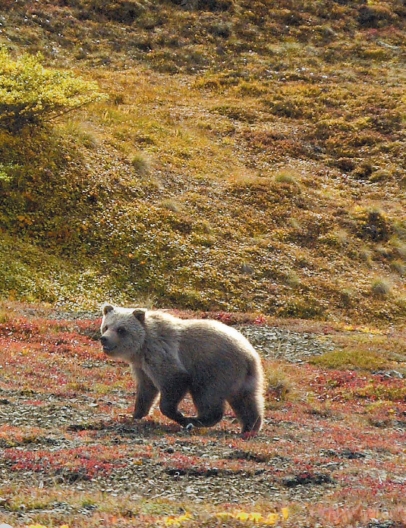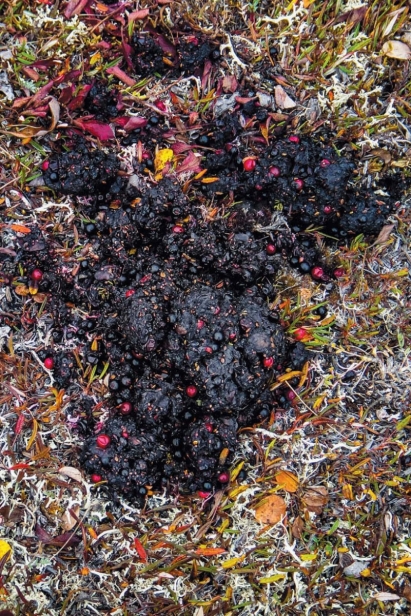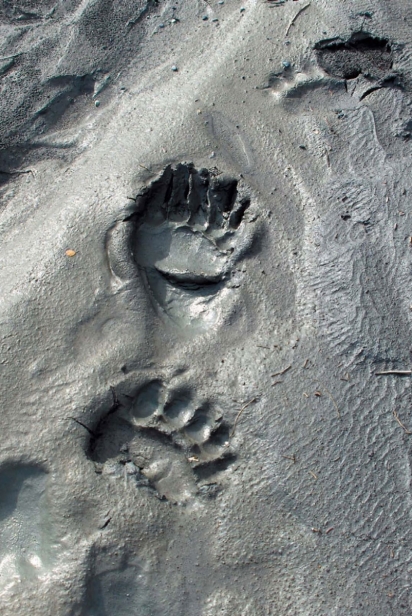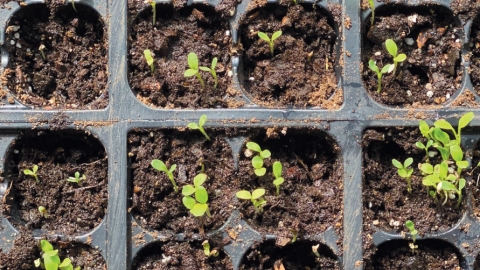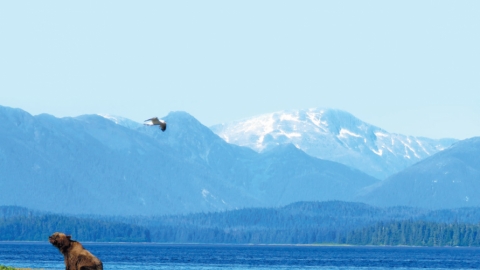Travelers Who Tend the Wild
In late summer, we walk for days in the mountains of the Alaska backcountry. Our steps carry our heavy packs in forward motion through the landscape. The vegetation changes all around us as we move at a human pace. We hike through brush, up creek beds, over tussocks, and down mountainsides. Days become weeks. Though we may not see any other human beings, we are not alone in our travels. We are humans traveling in the more-than-human world.
Other beings are also in motion. Mayflies hover over clear streams while grayling swim and search for a snack below the surface. The sounds of wingbeats and birdsong fill the air as feathered creatures flit, fly, and forage. Paw prints, hoofprints, and claw prints press into soft mud. We follow ancient trails cut into the tundra by animals. Deep paths of voles and squirrels connect underground homes beneath the moss. Our fellow travelers follow ancestral patterns, and carve out new routes.
Although rooted in the earth, plants also move at a unique pace. It is a pace that spans seasons and life cycles. Above ground, their branches and leaves stretch toward the sky, growing longer with each passing summer day. Roots and rhizomes spread further outward and deeper underground, sometimes sprouting new plants, and expanding into the neighborhood. Flowers morph into berries.
Late summer through fall in the Alaska backcountry offers a gorgeous feast for the eyes and belly. Blueberries cascade from bushes in sky-colored bundles. My heart surges with gratitude as my hands pick. Each juice-filled, flavor-packed berry is a precious gift. This wild garden is so generous. I wonder, how did the berry plants get here?
Near patches thick with blueberries, I pause at a pile of deep purple mush with whole berries gleaming in the sun. Close to soapberry bushes, I find shiny slicks of pink, red, and orange mash. Raven black spheres adorn piles near the vermillion leaves of bearberries. A multi-colored mound includes a medley of lingonberries, crowberries, and blueberries. It turns out bears are farmers that leave behind a wild palette of the berried landscape—past, present, and future.
Seeds are travelers designed to move far distances away from their parent plants to reduce competition and crowding and to ensure ecological diversity in case local conditions become no longer favorable. Even the most abundant berry patches can decline in productivity due to competition from other plants, drought, flood, and other natural or manmade disturbances. While some seeds travel via air or water, other seeds hitchhike outside or inside animal transports. Plants that bear fruit, such as berries, offer rich rewards to the animals that do their bidding. Birds and mammals feed on calorie- and nutrient-rich fruit while they carry the plants’ future generations in their gut and scatter them across the landscape.
Numerous studies of bear behavior and fruit-bearing seed dispersal have found that far-traveling bears that walk and swim large distances each day are instrumental in spreading fruit seeds in Alaska. Bears have a relatively short digestive tract and voracious appetites, so berries hitch a ride on these overland barges before being let go somewhere new. Large plops of seed-filled poop also attract small mammals such as voles that further spread the seeds. These smaller farmers do their part in dispersing seeds across the landscape, depositing them in a soil-based seedbank where they can remain dormant and viable in the earth for decades. If conditions are just right, the seeds will germinate and become a new generation of plants to move the species forward in time and space. Birds like grouse and ptarmigan also work as seed dispersal agents. The cycle of eating naturally includes reseeding.
As fellow travelers on the land, we acknowledge and honor the gifts of food and medicines from plants, from the earth, and from all the creatures that serendipitously spread the seeds all over the landscape. In a system of abundance, the workforce for Alaska’s wild berries involves an interdependence with the world’s nonhuman inhabitants, the instincts of which govern internal clocks, movements, and life-giving activities of the species and ecosystems that depend on them.
As I pick berries, I wonder about how I can also tend to the future of wild berry patches. I take what I need and leave berries for others. I share the harvest with elders and friends who are no longer able to pick. And when I press highbush cranberries or rose hips through a sieve, I save the ruby rich liquid pulp and collect the seeds to scatter them back in the forest. Perhaps they will feed a bird, a vole, or other creature. Or perhaps they will lie there for years and wait. And maybe, when the conditions are just right, something will stir in the seed and it will sprout, set roots in the soil, and begin a new cycle of life again.


